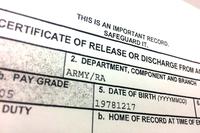
[EDITOR'S NOTE: I have traveled out to Ft. Bliss to participate in a media event intended to outline the Army's modernization effort for its brigade combat teams. I'll be out in the field tomorrow shooting video taking some stills and doing interviews (and generally getting smart on the program) and will provide data dumps here as comms permit. The following article from our Av Week friends helps set the scene.]
This article first appeared in Aerospace Daily & Defense Report.
By early October, the U.S. Army will have a new program executive office (PEO) in charge of its Brigade Combat Team Modernization (BCTM), a sweeping effort to restructure its controversial Future Combat Systems (FCS) program.
The new PEO will effectively act as the integrator for BCTM, looking across the board at how to integrate so-called capabilities sets into Brigade Combat Teams (BCTs), according to Paul Mehney, associate director for BCTM. Additionally, a product manager role will be established in various sectors, including one for the Ground Combat Vehicle (GCV), which will replace the cancelled Manned Ground Vehicle (MGV).
The Armys much-touted network, the backbone of FCS, could become a point of contention as the services Training and Doctrine Command (TRADOC) wrestles with how much information will go to whom and how it will get delivered. The MGVs were essentially the hub of the network, and without them, TRADOC will have to determine new requirements for hosting the network and how much information the new structure will relay to the field.
The fully equipped, 15-brigade FCS structure is off the table as well, forcing the Army to figure out how to incorporate Mine Resistant Ambush Protected (MRAP) vehicles and up-armored Humvees into the new BCT formations. All 73 Army BCTs will now be mobile and tailor-able, according to Mehney, capable of performing the full spectrum of operations -- offensive, defensive and stability -- no matter the brigades configuration.
Capability sets will replace so-called spin outs, with the BCTs benefiting from upgrades and improvements on a rotating basis every few years. That system may help the program avoid the technical maturity issues it faced over the course of development for FCS. Paul Francis of the congressional Government Accountability Office (GAO) testified June 16 before the Senate Armed Services air-land subcommittee that he thought the requirements were set before we knew what was technically feasible. So I think theres been a lot of work to rationalize.
Still, the end-product may not be that far from the original vision, albeit adapted to new budget realities, one Washington think tank analyst says in an Aug. 26 report. Given the continued development of the network and a number of additional FCS components, it seems unlikely that the new modernization program will be substantially different from the previous one, says Evan Braden Montgomery of the Center for Strategic and Budgetary Assessments. The Army may need to be far more selective in its modernization efforts, replacing some but not all of the different types of vehicles in its armored fleet.
The new process will take longer, however. The Army will start with a first increment in 2011, but it will take until 2025 to completely field all the capability sets.
Read the rest of this story, see how the Iraqi air force is gaining planes, read about the dead Rendon contract and hear the generals roar from our Aviation Week friends, exclusively on Military.com.
-- Christian








